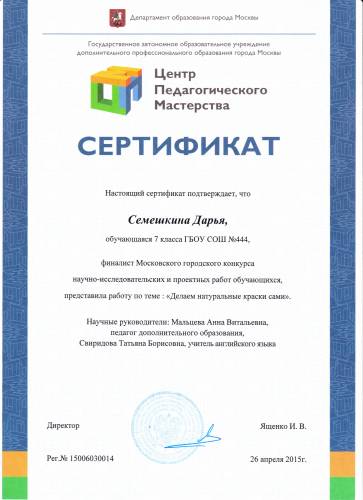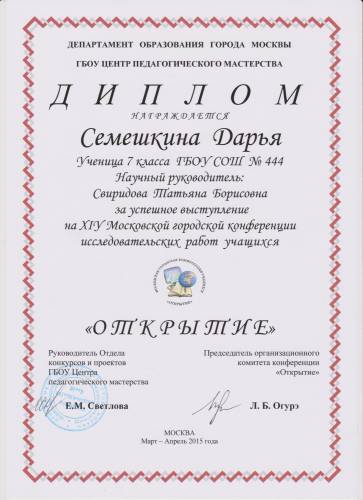| Главная » Файлы » Проекты » Презентации учащихся |
| 28.03.2016, 22:19 | |
|
INTRODUCTION
Topicality of the chosen topic: Familiar to us paints consist of various chemical modifications. And if you have the allergy, shall we draw or not? Or if a small child draws you should watch, because he can suddenly put something in his mouth. I decided to create paints based on food products and their compounds. Relevance and novelty: From the book "Old recipes" by B. N. Golovkin I have learned that in ancient times people used natural dyes for dyeing of fabrics. They were made from the bark of trees, which was boiled with alum and others. In another book for the experiment with fabric paint there were suggested the using of young birch leaves, needles and young spruce cones, fallen leaves lime. In the next experiment we were offered to change the colour of natural colours by using the acid (1% hydrochloric acid, 0.025% citric acid, 6-9% acetic acid) or alkalis. Tree bark, young or fallen leaves, needles, cones satisfied exactly hard to get, especially in large quantity, and the proposed acid are inaccessible and also dangerous. I began to think, than they can be replaced. Instead of bark, leaves and so on, I decided to use fruit and vegetables, as well as alkalis and acids like lemon juice and baking soda. This topic is without doubt important and actual in our everyday life. It is important because we should take care of our health and health of all children. That’s why we need to know some important information about them and know how to use it.
Hypothesis: It is possible to create from food additives for harmless paints. The object of the research is the food and chemistry industries. The subject of the research is the vegetable products (berries, fruits, vegetables, herbs, flowers). The aim of my work is to create from food environmentally friendly paints which are harmless when injected into the human body.
In order to achieve this aim the followings tasks are set:
1. To find and to read sources of information on the topic including different journals, online resources, books and etc.; 2. To analyse the data; 3. To choose fruit and vegetables and to find out if the colour of juice or decoction will be changed when I change its pH or it will be persistent and bright; 4. To find harmless additives that can change the acidity of juice and broth; 5. To work out the algorithm of experiments for research of changing of the colour of different kinds of juice, to conduct these experiments, to fix and to analyze the results; 6. To choose the most available and cheap colouring fruits and vegetables from which you can make a paint of different colours; 7. To work out the methods of storage of paints.
MY FIRST EXPERIENCE
| |
| Просмотров: 1381 | Загрузок: 160 | | |
| Всего комментариев: 0 | |



